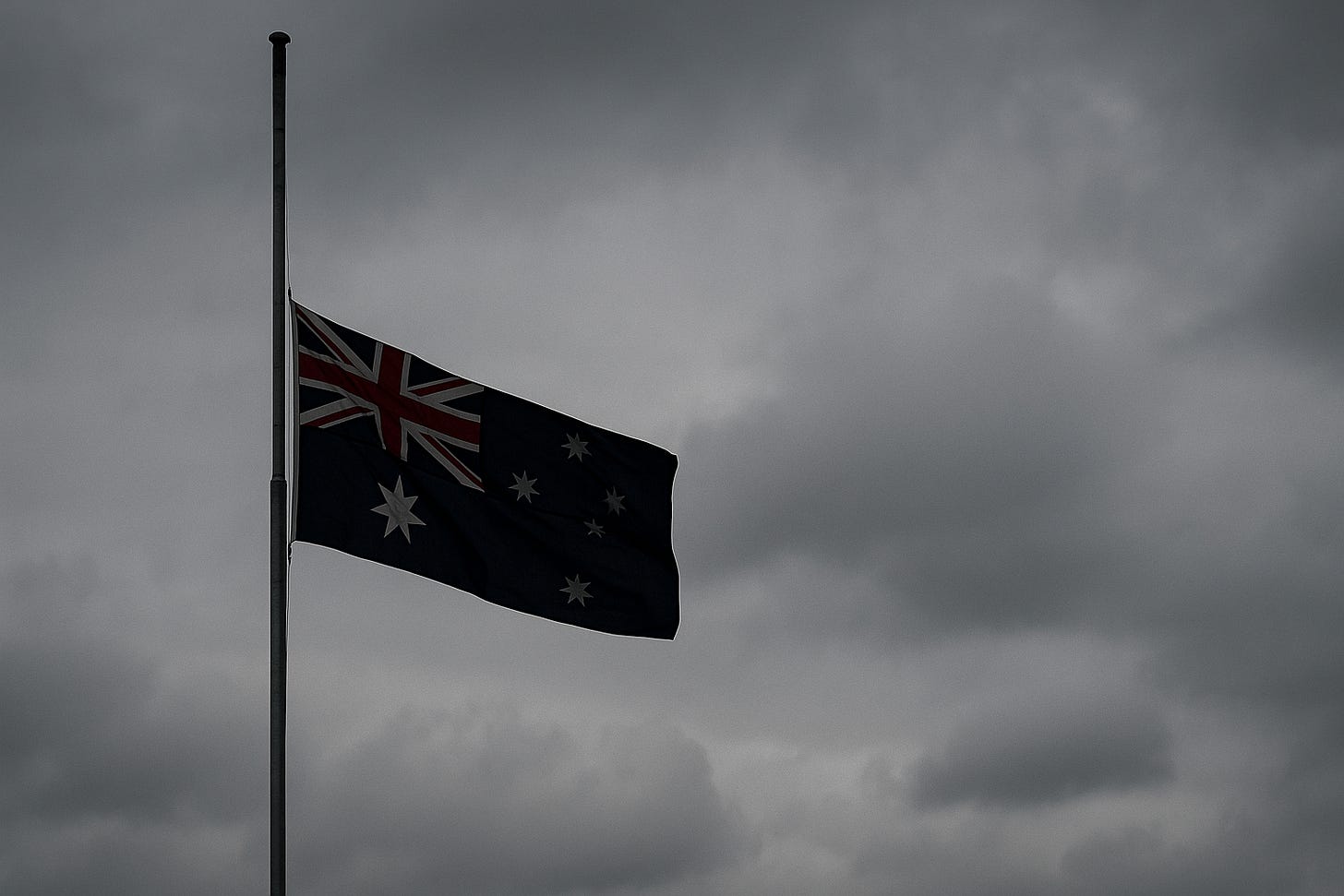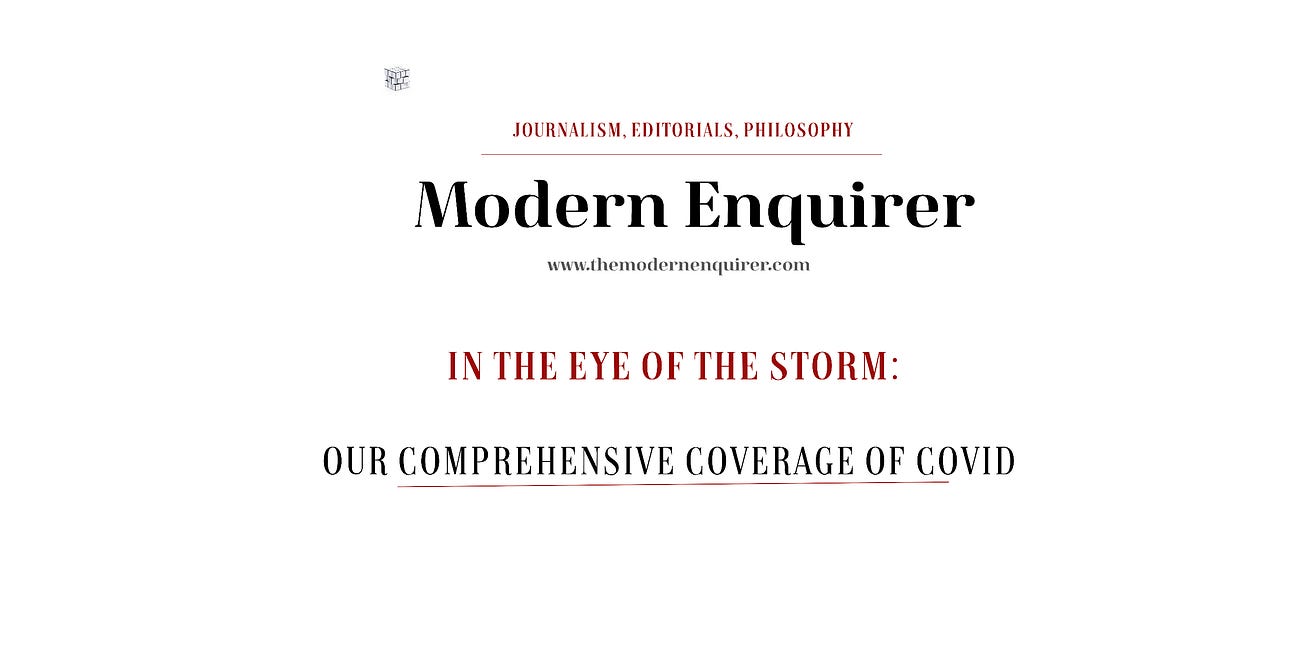Australians remain traumatised because their government won’t admit what it did during Covid
The first act of recovery is not another inquiry. It is an apology.
By Nick Holt
Australia is a country living in denial. The political class, the bureaucracy, the medical establishment, and the media — each in its own way — have refused to admit their mistakes during Covid-19. That collective silence has left the nation psychologically, economically, and morally paralysed.
What lingers is a form of collective post-traumatic stress — not in the casual sense, but in the clinical one. The nation endured a prolonged state of hyper-arousal: fear messaging, isolation, and moral coercion sustained for months without resolution.
In psychological terms, the trauma remains unintegrated — there has been no narrative closure, no public acknowledgement of harm. When trauma is not named, it cannot be processed; it migrates inward, manifesting as fatigue, irritability, and chronic distrust. Australia now displays these symptoms on a civic scale.
The political class sought authority without limit, issuing decrees it scarcely understood and defending them with moral certainty. The bureaucracy enforced those decrees with blind procedural zeal, mistaking compliance for competence.
The medical establishment, once bound to independent judgement, surrendered its conscience to government messaging, allowing science to become slogan. And the media, whose duty was to question, chose instead to police the boundaries of acceptable thought.
Together they created a culture that valued control over truth and image over integrity. What began as a public-health emergency became a moral test of the nation’s character — one that every major institution failed.
It was, in retrospect, a perfect storm of cowardice disguised as competence. Each institution behaved according to its own pathology: politicians sought control, bureaucrats sought cover, doctors sought consensus, and journalists sought belonging.
None could bring themselves to say what was true — that uncertainty is not weakness, and that error is inevitable in crisis. Instead, they clung to the illusion of unanimity.
This unanimity came at a cost. When the official narrative became synonymous with virtue, doubt became heresy. The apparatus of public health hardened into moral theatre: the daily briefings, the graphs, the slogans, the ritual scolding.
Beneath the surface, a different process was unfolding — the slow physiological burnout of a society kept in crisis mode.
What we inherited from that period is not stability but exhaustion. The public’s nervous system never reset. We learned to live in a state of vigilance that no one has yet named, let alone treated.
Australia functions, but it does not feel safe. It endures rather than recovers.
That exhaustion expresses itself not only in psychology but in public life. For two years Australians were locked down, punished, and gaslit — again and again and again. We were told to obey, to trust, to stay home “for the greater good.”
We were lectured, fined, and shamed for asking questions. People were arrested for sitting on park benches. The healthy were treated as potential criminals.
When it was over, the silence was deafening. No official said, “We went too far.” No journalist said, “We failed to ask.” No academic said, “We silenced debate.” No senior health bureaucrat said, “We lost perspective.”
The result is a quiet disbelief that such things happened here. The trauma is subdued, domestic, invisible — expressed not in protest but in fatigue, bitterness, and distrust.
The denial extends to economics. The moral damage was matched by an economic one, and the numbers tell their own story. Between 2020 and 2022, Australia’s gross government debt almost doubled, rising from roughly $560 billion to over $890 billion — the largest peacetime expansion in modern history.
The Reserve Bank printed money through quantitative easing, flooding the system with liquidity that would later drive the sharpest inflation in three decades.
The damage was disguised at first. Generous stimulus payments masked the reality that thousands of small and medium-sized businesses — the backbone of the economy — were being destroyed. Labour participation fell, productivity flatlined, and supply chains fractured.
By 2023, the consequences were visible in every household ledger: inflation peaking above seven per cent, real wages declining, and interest rates rising at the fastest pace since the early 1990s. The debt remains, and so does the hangover — higher prices, stagnant wages, record mortgage stress.
Yet the same officials who destroyed livelihoods now lament a “cost-of-living crisis,” still failing to connect it to Covid-era policy. The correlation is not speculative; it is arithmetic. We borrowed against the future, mistook panic for prudence, and now call the bill compassion.
This is repression in economic form — a refusal to connect cause and effect.
But the deeper costs are harder to measure. Across the country, cancer screenings were postponed, surgeries delayed, diagnoses missed. These are the quiet casualties of a system that decided one crisis justified all others.
The toll will appear not in budgets but in mortality rates and family grief for years to come.
Most devastating of all was what happened to the young. Australia’s youth-mental-health crisis deepened into an emergency, yet the nation pretended it was manageable.
During that period, I was, to my knowledge, the only journalist to interview the CEO of Kids Helpline. She described not a temporary spike but a sustained surge — more frequent, more acute calls, and younger children in distress.
The data bore it out: contacts to the service rose from roughly 1.1 million in 2019 to more than 1.4 million by 2021, with the most alarming increases in calls related to self-harm, suicidal ideation, and family conflict. The average age of children reporting suicidal thoughts had fallen below fourteen.
Across state health networks, emergency departments were reporting similar patterns — more young people presenting after self-harm attempts, longer waiting times for mental-health beds, and an unprecedented demand for community counselling services that still hasn’t eased.
By contrast, when I requested an interview with the Prime Minister’s suicide-prevention adviser, Christine Morgan, her office initially agreed but later declined after reviewing my questions and line of inquiry.
The public was told the situation was “being managed.” My experience suggested it wasn’t being faced.
This is what denial looks like when measured in human cost — a country that counted infections but not despair. The bureaucracy that once boasted of “saving lives” cannot now face the lives it quietly broke.
That refusal of mea culpa has become the organising principle of public life. No one resigns. No one retracts. Every contradiction is rebranded as “evolving guidance.”
The press, having served as the state’s public-relations arm, now pretends it was misled — moving seamlessly from one manufactured crusade to the next: climate, race, gender, war. Each is adopted with the same moral fervour and the same incuriosity. The great continuity of our time is not truth but hysteria.
Academia, the monastery of cowardice, hasn’t rediscovered critical thought — it has abolished the need for it. The same faculties that once claimed to defend inquiry now preside over its burial.
They issue land acknowledgements instead of arguments, and diversity statements instead of ideas. Tenure has become protection from accountability, not a licence for dissent.
They will never own their part in this because they no longer believe truth requires defence — only consensus.
And the public-health establishment, still high on the narcotic of authority, has learned nothing because it refuses to believe it ever erred.
Its executives, consultants, and health bureaucrats now speak in the language of review and resilience — the dialect of an industry that mistakes paperwork for penance.
The pandemic turned public health into a command economy of fear: modelling became prophecy, compliance became cure, and every overreach was justified as compassion.
What it discovered was not how to protect the public, but how to manage it — how to convert anxiety into obedience, and obedience into funding.
Billions were spent on messaging, coordination, and “behavioural insights” while basic care deteriorated. The system became what it always secretly wanted to be: indispensable, unaccountable, and adored.
The only lesson learned was how easily people can be frightened into submission — and how profitable that fear can be.
What all these people abandoned wasn’t politics or science, but the principle of self-respect — the willingness to tell the truth when it costs something.
Power offered safety, proximity, and the illusion of virtue — and they lunged for it. The press wanted access, the bureaucrat wanted obedience, the academic wanted funding.
All found it easier to kneel than to think. These remain the weakest — and therefore the most inept — people in the country.
Australia’s unhealed wound is not emotional or economic — it is moral. Until those who led, enforced, and amplified the pandemic response — including the medical establishment — find the courage to admit their mistakes, the trauma will persist.
The distrust that now defines civic life is not conspiracy thinking; it is recognition. Australians saw what their institutions became under pressure — and they have not forgotten.
The first act of recovery is not another inquiry. It is an apology.
In the Eye of the Storm: The Modern Enquirer's Comprehensive COVID-19 Journey
From early 2020, I dedicated myself to covering the COVID-19 pandemic and its wide-ranging impacts.




